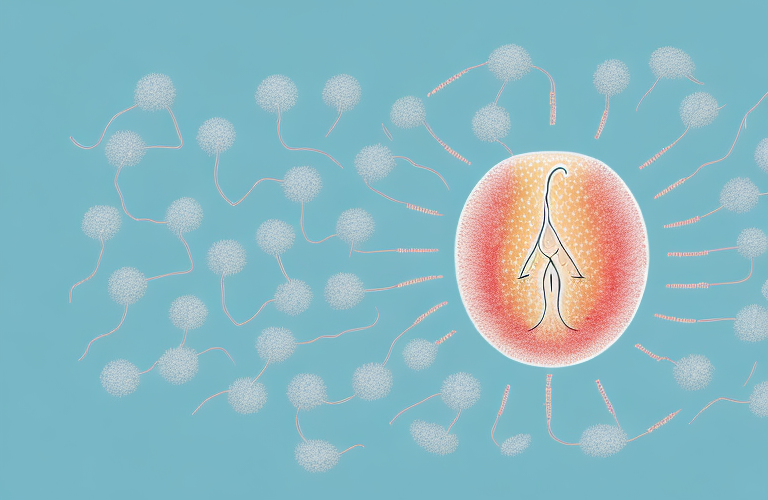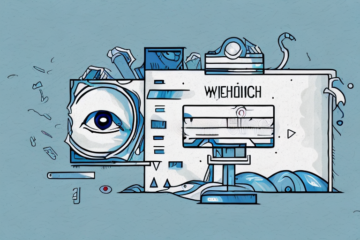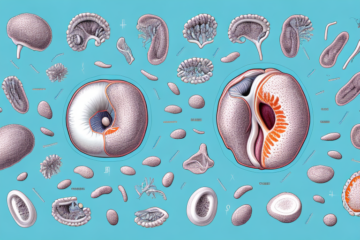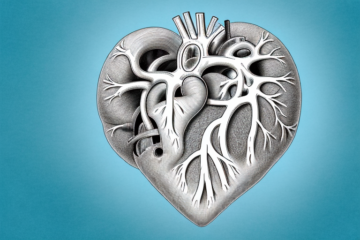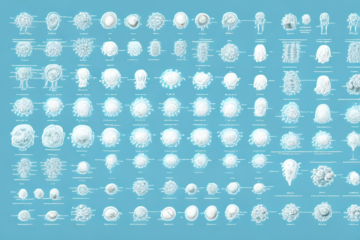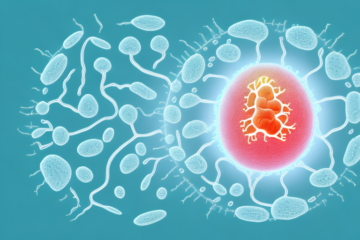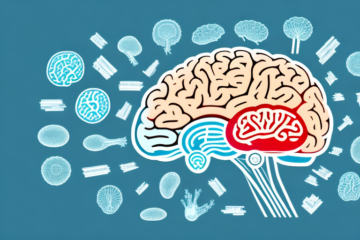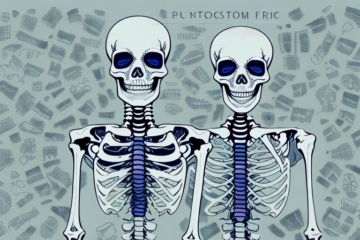Interstitial Cystitis and Painful Bladder Syndrome are two conditions that are often used interchangeably, but they are not the same thing. Interstitial Cystitis (IC) is a chronic bladder condition that is characterized by inflammation and pain in the bladder and pelvic region while Painful Bladder Syndrome (PBS) is defined by chronic pain, pressure or discomfort in the bladder, urethra, or pelvic region that is not necessarily associated with inflammation.
Understanding Interstitial Cystitis and Painful Bladder Syndrome
Interstitial Cystitis and Painful Bladder Syndrome can have a debilitating impact on the quality of life. They can cause chronic pain, discomfort, and even urinary incontinence in some cases. IC is a chronic condition that can last for several years, and the symptoms may come and go over time. Although there isn’t any cure for IC, there are treatment options available that focus on managing the symptoms and improving the quality of life.
It is important to note that the exact cause of IC and PBS is still unknown. However, some theories suggest that it may be related to a defect in the bladder lining, an autoimmune disorder, or nerve damage. Research is ongoing to better understand the underlying causes of these conditions and to develop more effective treatments.
Signs and Symptoms of Interstitial Cystitis
The symptoms of Interstitial Cystitis can vary from person to person, but the most common ones include urgency to urinate, frequent urination, pain in the bladder or pelvic area, pain during sexual intercourse, and pain during urination. The symptoms can worsen during menstruation in women, and after consuming certain foods, such as coffee, tea, citrus fruits, and alcohol.
Other less common symptoms of Interstitial Cystitis include discomfort or pain in the lower back, discomfort or pain in the thighs, and discomfort or pain in the vulva or vagina in women. Some people may also experience fatigue, depression, and anxiety as a result of their symptoms. It is important to note that the severity of symptoms can also vary, with some people experiencing mild discomfort while others may have severe pain and disruption to their daily lives.
Common Causes of Painful Bladder Syndrome
The exact cause of Painful Bladder Syndrome is unknown, but studies have shown that it could be related to nerve dysfunction, bladder inflammation, or even an autoimmune disorder. Some researchers also believe that genetics could be a factor.
Other potential causes of Painful Bladder Syndrome include pelvic floor dysfunction, urinary tract infections, and certain medications. Pelvic floor dysfunction occurs when the muscles in the pelvic area become weak or tight, leading to pain and discomfort. Urinary tract infections can also cause painful bladder symptoms, as can certain medications such as chemotherapy drugs and some antibiotics. It is important to speak with a healthcare provider if you are experiencing symptoms of Painful Bladder Syndrome to determine the underlying cause and receive appropriate treatment.
Risk Factors for Interstitial Cystitis and Painful Bladder Syndrome
Women are more likely to suffer from IC and PBS than men, and the risk increases as they age. Childhood trauma, infections, and surgeries in the pelvic region may also increase the risk of developing IC and PBS.
Recent studies have also shown a correlation between IC and PBS and certain dietary habits. Consuming acidic foods and drinks, such as citrus fruits and coffee, may exacerbate symptoms. Additionally, individuals who consume high amounts of artificial sweeteners may be at a higher risk for developing IC and PBS.
Other risk factors for IC and PBS include certain medical conditions, such as fibromyalgia and irritable bowel syndrome, as well as genetics. If a family member has been diagnosed with IC or PBS, there may be an increased likelihood of developing the condition.
Diagnosis Methods for Interstitial Cystitis
Diagnosis of IC and PBS can be a challenge because there isn’t a specific test for it. A urologist or a urogynecologist will usually run several tests to eliminate other possible causes of the symptoms before reaching a diagnosis. These tests may include urine tests, bladder and pelvic ultrasounds, and cystoscopy.
In addition to these tests, the doctor may also ask the patient to keep a bladder diary to track their symptoms and urination patterns. This can help the doctor identify any triggers or patterns that may be contributing to the symptoms. In some cases, the doctor may also perform a potassium sensitivity test, which involves instilling a solution of potassium into the bladder to see if it causes pain or discomfort.
Treatment Options for Painful Bladder Syndrome: Medications, Therapies, and More
Treatment for IC and PBS typically involves a combination of medications, lifestyle changes, and even surgery in some cases. Medications such as anti-inflammatory drugs, antihistamines, and even antidepressants can help manage the symptoms of IC and PBS. Bladder instillation therapy which involves instilling medication directly into the bladder can be helpful. Physical therapy, stress management, and pain management techniques can also provide relief.
In addition to these treatment options, dietary changes can also play a role in managing IC and PBS symptoms. Some people find that avoiding certain foods, such as spicy or acidic foods, can help reduce bladder irritation. Others may benefit from increasing their intake of water and reducing their consumption of caffeine and alcohol. It is important to work with a healthcare provider to develop a personalized treatment plan that addresses all aspects of the condition.
Lifestyle Changes to Manage Interstitial Cystitis Symptoms
Lifestyle changes are an essential part of managing IC and PBS. Drinking plenty of water, avoiding bladder irritants such as caffeine and alcohol, trigger point release, and bladder retraining can help manage symptoms. Regular exercise, bladder hydration, and relaxation techniques can also help manage IC and PBS symptoms.
In addition to these lifestyle changes, some people with IC and PBS find that dietary changes can also help manage their symptoms. Some common trigger foods include spicy foods, acidic foods, and artificial sweeteners. Keeping a food diary and tracking symptoms can help identify trigger foods and guide dietary changes. It is important to work with a healthcare provider or registered dietitian to ensure that any dietary changes are safe and nutritionally balanced.
Coping with the Emotional Impact of Painful Bladder Syndrome
Chronic pain can affect one’s mental and emotional well-being, and IC and PBS can be a distressing and intense experience. Support groups, mental health support, stress management techniques, and self-care are all essential for managing the emotional impact of IC and PBS
It is important to remember that emotional and mental health are just as important as physical health when dealing with IC and PBS. Seeking professional help from a therapist or counselor can be beneficial in managing the emotional impact of chronic pain. Additionally, practicing mindfulness and relaxation techniques, such as meditation or yoga, can help reduce stress and improve overall well-being.
Alternative and Complementary Therapies for Interstitial Cystitis Treatment
Alternative therapies such as acupuncture, hypnotherapy, mindfulness meditation, and herbal supplements have been shown to improve the symptoms of IC and PBS. However, it is essential to use these therapies with caution and in conjunction with conventional medical treatments.
Acupuncture is a traditional Chinese medicine technique that involves inserting thin needles into specific points on the body. It has been found to be effective in reducing pain and inflammation associated with IC and PBS. Hypnotherapy, on the other hand, involves inducing a trance-like state to help patients manage their symptoms. It has been shown to be effective in reducing pain, anxiety, and depression in patients with IC and PBS.
Mindfulness meditation is a technique that involves focusing on the present moment and accepting one’s thoughts and feelings without judgment. It has been found to be effective in reducing stress and anxiety, which are common triggers for IC and PBS symptoms. Herbal supplements such as quercetin, a flavonoid found in fruits and vegetables, have also been found to be effective in reducing inflammation and pain associated with IC and PBS.
Prevention Strategies for Interstitial Cystitis and Painful Bladder Syndrome
Although there is no known way to prevent IC and PBS, it is possible to reduce the risk of developing these conditions. Practicing good hygiene, maintaining healthy urinary habits, eliminating bladder irritants, and reducing stress levels can all be helpful in reducing the risk of developing IC and PBS.
Additionally, maintaining a healthy weight and avoiding smoking can also help reduce the risk of developing IC and PBS. Obesity and smoking have been linked to an increased risk of bladder problems, including IC and PBS.
It is also important to stay hydrated and drink plenty of water throughout the day. This can help flush out any potential irritants in the bladder and reduce the risk of developing IC and PBS.
Understanding the Link between Interstitial Cystitis and Other Chronic Pain Conditions
Many people who suffer from IC and PBS also suffer from other chronic pain conditions such as fibromyalgia, vulvodynia, and irritable bowel syndrome. Studies have shown that there could be a link between these conditions, and researchers are still trying to understand the mechanism behind it.
One theory is that these conditions may share a common underlying cause, such as abnormalities in the nervous system or immune system. Another possibility is that the pain from one condition may trigger or worsen pain in other areas of the body.
Regardless of the exact mechanism, it is clear that managing these conditions requires a comprehensive approach that addresses all of the patient’s symptoms. This may include a combination of medications, physical therapy, and lifestyle changes such as stress reduction and dietary modifications.
Latest Research on Interstitial Cystitis and Painful Bladder Syndrome
Research into IC and PBS is ongoing, and several new treatments and therapies are being developed to manage the symptoms. Scientists are also focusing on understanding the underlying mechanisms behind these conditions to develop better treatments and preventative measures.
Interstitial Cystitis and Painful Bladder Syndrome can be challenging to manage, and it may take time to find the right treatment plan that works for you. However, with the right diagnosis and management techniques, it is possible to manage the symptoms and improve the quality of life for people with IC and PBS. Consult a medical professional if you think you have any symptoms of IC or PBS.
One promising area of research is the use of nerve stimulation to treat IC and PBS. This involves using electrical impulses to stimulate the nerves that control bladder function, which can help reduce pain and improve bladder control. Other areas of research include the use of natural supplements and dietary changes to manage symptoms, as well as the development of new medications that target specific aspects of the condition.

